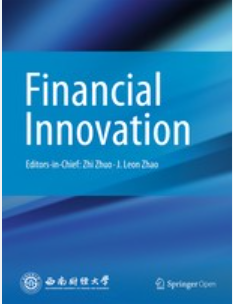An evaluation of the adequacy of Lévy and extreme value tail risk estimates
IF 7.2
1区 经济学
Q1 BUSINESS, FINANCE
引用次数: 0
Abstract
This study investigates the simplicity and adequacy of tail-based risk measures—value-at-risk (VaR) and expected shortfall (ES)—when applied to tail targeting of the extreme value (EV) model. We implement Lévy–VaR and ES risk measures as full density-based alternatives to the generalized Pareto VaR and the generalized Pareto ES of the tail-targeting EV model. Using data on futures contracts of S&P500, FTSE100, DAX, Hang Seng, and Nikkei 225 during the Global Financial Crisis of 2007–2008, we find that the simplicity of tail-based risk management with a tail-targeting EV model is more attractive. However, the performance of EV risk estimates is not necessarily superior to that of full density-based relatively complex Lévy risk estimates, which may not always give us more robust VaR and ES results, making the model inadequate from a practical perspective. There is randomness in the estimation performances under both approaches for different data ranges and coverage levels. Such mixed results imply that banks, financial institutions, and policymakers should find a way to compromise or trade-off between “simplicity” and user-defined “adequacy”.评估莱维和极值尾部风险估计值的适当性
本研究探讨了基于尾部的风险度量--风险价值(VaR)和预期缺口(ES)--在应用于极值(EV)模型的尾部目标时的简单性和充分性。我们将 Lévy-VaR 和 ES 风险度量作为基于全密度的替代方案,以取代尾部目标极值模型的广义帕累托 VaR 和广义帕累托 ES。利用 2007-2008 年全球金融危机期间 S&P500、FTSE100、DAX、恒生指数和日经 225 指数期货合约的数据,我们发现使用尾部目标 EV 模型进行基于尾部的风险管理的简易性更具吸引力。然而,EV 风险估计的表现并不一定优于基于全密度的相对复杂的 Lévy 风险估计,后者不一定总能给我们带来更稳健的 VaR 和 ES 结果,这使得该模型在实用性方面存在不足。对于不同的数据范围和覆盖水平,两种方法的估计结果都存在随机性。这种好坏参半的结果意味着银行、金融机构和政策制定者应该在 "简单性 "和用户定义的 "充分性 "之间找到一种折中或权衡的方法。
本文章由计算机程序翻译,如有差异,请以英文原文为准。
求助全文
约1分钟内获得全文
求助全文
来源期刊

Financial Innovation
Economics, Econometrics and Finance-Finance
CiteScore
11.40
自引率
11.90%
发文量
95
审稿时长
5 weeks
期刊介绍:
Financial Innovation (FIN), a Springer OA journal sponsored by Southwestern University of Finance and Economics, serves as a global academic platform for sharing research findings in all aspects of financial innovation during the electronic business era. It facilitates interactions among researchers, policymakers, and practitioners, focusing on new financial instruments, technologies, markets, and institutions. Emphasizing emerging financial products enabled by disruptive technologies, FIN publishes high-quality academic and practical papers. The journal is peer-reviewed, indexed in SSCI, Scopus, Google Scholar, CNKI, CQVIP, and more.
 求助内容:
求助内容: 应助结果提醒方式:
应助结果提醒方式:


